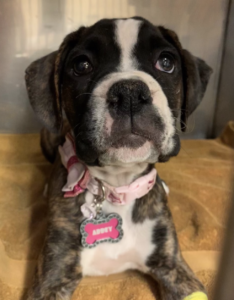Sago Palm Toxicity

Written by Hannah Alharayeri
Dogs and cats love to chew on different plant leaves and trees, both inside and outside. Sometimes, pets unintentionally chew or ingest plants that have toxic properties – Sago Palms are among these plants.
Sago Palms are naturally found in tropical/subtropical environments, and are commonly used as ornamental bonsai plants. Many people grow these in their yards and are not aware that they can be harmful to their pets if ingested.
Symptoms
Below is a list of symptoms related to ingestion of this plant to look out for:
- Vomiting
- Blood in Feces
- Bloody Diarrhea
- Icterus (yellow coloration of skin and gums)
- Bruising
- Bleeding easily (coagulopathy, disseminated intravascular coagulation – DIC)
- Neurological signs such as depression, circling, paralysis, seizures, coma
- Death
These symptoms are seen as a result of liver damage caused by a toxin called Cycasin that is found in the Sago Palm. Liver disease may lead to bleeding deficits (disseminated intravascular coagulation- DIC), which is abnormal bleeding and clots in the bloodstream, along with neurological abnormalities.
Presentation and Procedure
 Abbey presented to us at Atlantic Street Pet Emergency Center unconscious. We immediately started stabilizing her with critical care. After some investigating, we were informed that the owners have Sago Palm trees in their yard. Abbey had been playing and chewing on the leaves earlier in the day.
Abbey presented to us at Atlantic Street Pet Emergency Center unconscious. We immediately started stabilizing her with critical care. After some investigating, we were informed that the owners have Sago Palm trees in their yard. Abbey had been playing and chewing on the leaves earlier in the day.
She was hospitalized overnight on intravenous fluids, intralipids, and injectable medications to treat her toxicity. She made a full recovery and was able to go home the next day on liver support supplements and GI protectants. She is expected to make a full recovery. She will be returning to visit us in a couple of days to run blood work to recheck her liver values and to ensure that her health has not declined.
Abbey was very fortunate that her parents brought her to us in a timely fashion. We were thankful that they were able to help us investigate what she potentially ingested so that we could treat her accordingly.
If you are unsure which house plants, flowers, or trees may be toxic to your animals, please do some research before adding them to your home or garden!